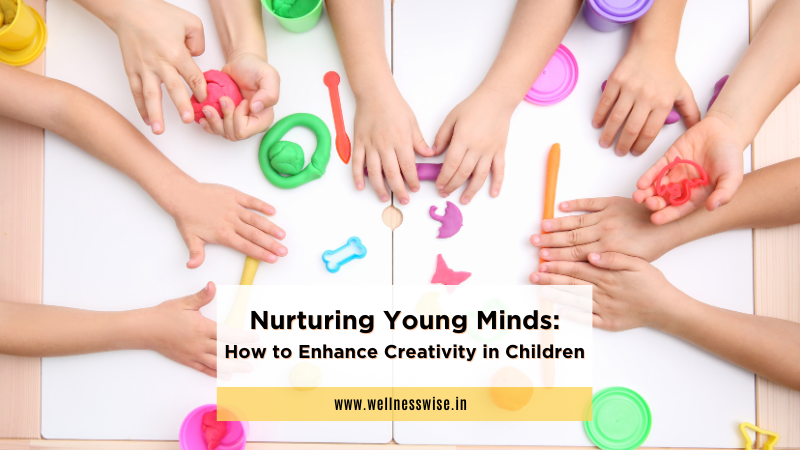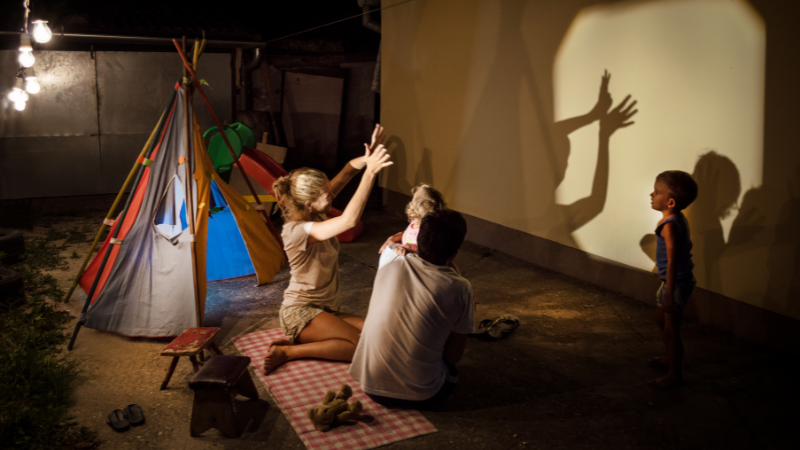
- by Dr. Alka Saxena
- | Views :4126
- Read :5 Minutes
I am filled with fascination whenever I see little children devise novel ways of play. As little girls, my daughters would often give different names to their toys and pretend that the toys were their friends. Pretend play is one of the ways kids express their creativity and innovation. Have you ever seen young children making cars out of building blocks or pillows? Children are naturally curious beings. However, as they grow up, this creativity declines, and we try to make them fit into molds.
Creativity: An essential skill
In a world that is changing at a fast pace, creativity is an essential skill. It has also been enumerated as one of the 21st century skills. Creativity is about imagination and out-of- the- box thinking. It helps to anticipate innovative ways to solve problems and adapt to changes in life.
Ways to Foster Creativity
As educators and parents, how can we enhance creativity in children? Here are some meaningful ways that parents and educators can incorporate to cultivate creativity in everyday life:

Encourage Open-ended Play
– We have often seen children playing with cardboard boxes, building blocks, clay dough and sandbox. Isn’t it mesmerising to see how they use these tools and invent their own games? Open-ended play requires no instructions, directions, or rules. Kids use their innate imagination and creativity to express themselves. The famous psychologist Lev Vygotsky said, “Play is the realm of spontaneity and freedom.”
Encouraging the use of safe open-ended tools in our homes and classrooms additionally promotes physical and language development and fosters creativity in children.
Provide experiences-
A visit to a museum, nature walks, hikes and local parks are simple experiences which can motivate kids to observe and ask questions. These experiences cultivate natural curiosity and aid to broaden horizons. I remember our numerous nature walks as kids. We often collected fallen leaves, flowers and pebbles on these explorations which were later used in our art projects and in turn nurtured creative thinking and problem-solving skills.

Ask Open-ended questions-
As adults, we often instruct children what to do and how to do it. This may serve our purpose at that moment. However, it does not nudge the child to think for alternatives and explore options. Instead, by asking them curiosity questions, we are inviting them for a discussion. This inspires the child to think and feel more capable.
As Dr. Jane Nelsen writes in her Positive Discipline Workbook, “Telling creates a physiological tension in the body, and a message to the brain to resist. Asking creates physiological relaxation and sends message to the brain to search for an answer.”
Additionally, asking open-ended questions prompts them to delve deeper into the subject and communicate further.
Some examples of open-ended questions are: How does that make you feel? How do you think this thing works? What are your plans? What do you think we should try next?

Storytelling-
Storytelling is an art that encourages creativity and imagination. It transcends boundaries of time and space and transports us into a magical world. There are diverse forms of story narration prevalent in our country and around the world. Discover these forms with your children to experience the power of storytelling. We can enhance children’s language, socioemotional development, and their creative thinking skills through this age-old tool. I have added the links of my earlier blogposts on storytelling for additional reading.
https://wellnesswise.in/5-amazing-benefits-of-storytelling-for-kids/
https://wellnesswise.in/recollecting-the-art-of-storytelling-this-childrens-day/
https://wellnesswise.in/storytelling-for-life-skills
To further develop creative thinking skills of our tiny-tots, activities like feelie box, making musical instruments, circle games, sound games are interesting and educative.
For older children, including exercises like What if questions, create your own metaphors, ideas to make things better, brainstorming promote creative thinking skills.
What are some of the ways that you have endeavoured with your kids to encourage creativity? Share in the comments section.


We need to be creative and innovative in the manner we deal with our children. What a thought – provoking writeup! Thank you for sharing Ma’am.
Appreciate your kind words! Creativity and innovation are indeed key in nurturing children.
Such a wonderful post! Unstructured play often sparks the most creativity, whether it’s forts out of cushions, invented stories, turning everyday objects into something magical. I especially loved the point about open-ended questions as they really do inspire deeper thinking and exploration.
“Beautifully said. Thanks for adding your insights!